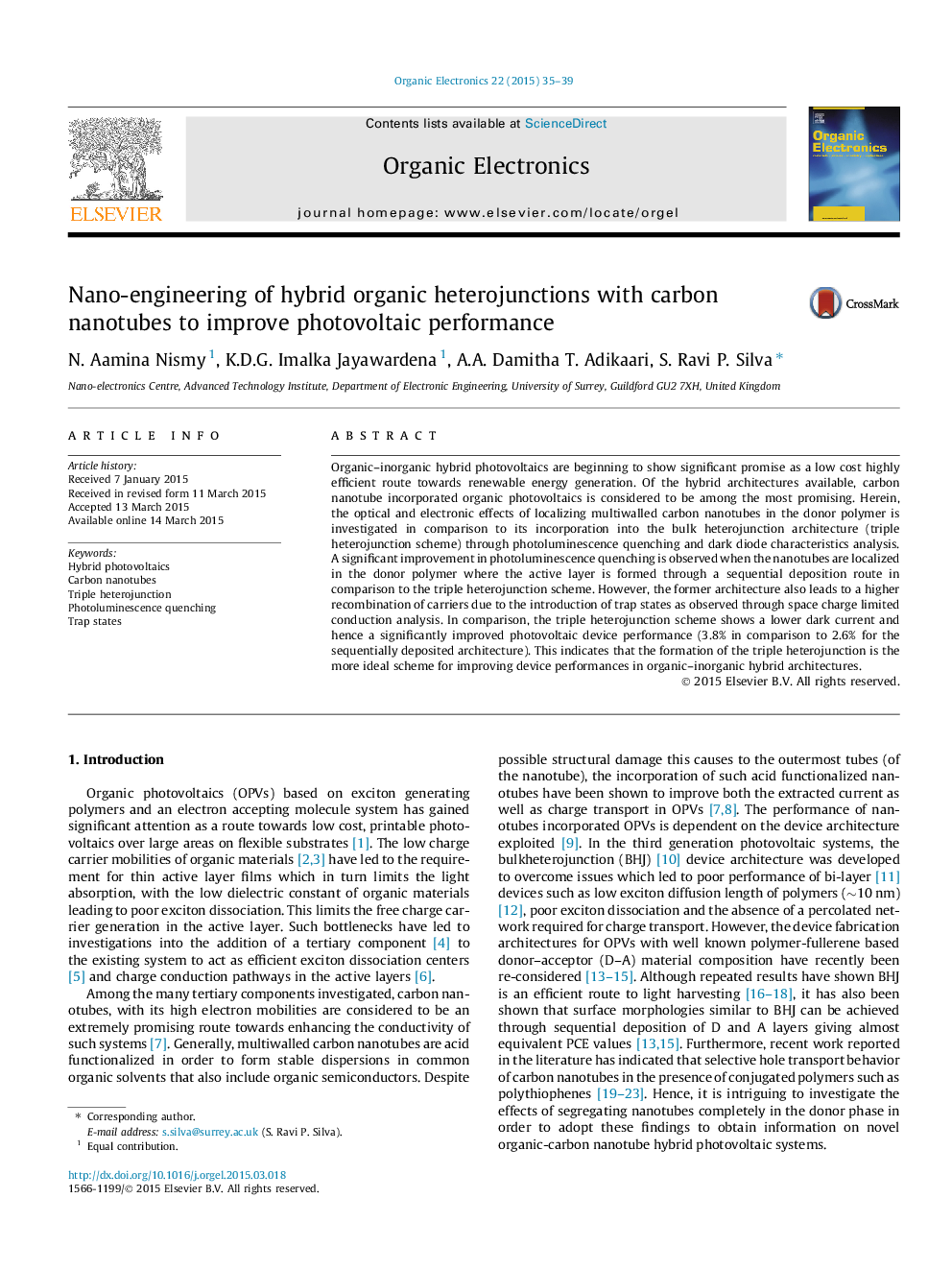| Article ID | Journal | Published Year | Pages | File Type |
|---|---|---|---|---|
| 7701661 | Organic Electronics | 2015 | 5 Pages |
Abstract
The optical and electronic effects of localizing carbon nanotubes specifically within the donor phase or randomly within a bulk heterojunction architecture for photovoltaics is investigated. While the former leads to an improved exciton dissociation it also results in higher charge trapping indicating the triple heterojunction architecture to be the most ideal in incorporating a tertiary inorganic component into organic photovoltaics.
Related Topics
Physical Sciences and Engineering
Chemistry
Chemistry (General)
Authors
N. Aamina Nismy, K.D.G. Imalka Jayawardena, A.A. Damitha T. Adikaari, S. Ravi P. Silva,
